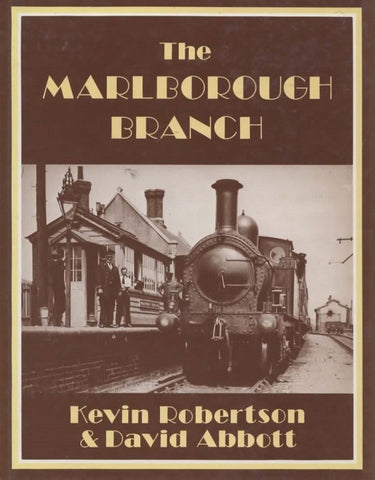The Marlborough Branch: The Railways of Savernake and Marlborough (IR120)
Product No.: IR120
Title: The Marlborough Branch: The Railways of Savernake and Marlborough
Author(s): Robertson, Kevin & Abbott, David
Illustrator(s): N/A
Publisher: Irwell Press
ISBN: 1871608120
Condition: New
Binding: Hardcover
Dust Jacket: New
Edition: 1st Edition
Publication Year: 1990
Features: 90 Pages with Black/White Photos.
With the northern extension to Cheltenham complete, the M&SWJR turned its attention in the early 1890s to resolving its problem at Marlborough, where it was paying £1,000 a year to run over the GWR Marlborough branch tracks. It negotiated successfully with the Marquess of Ailesbury to run a new line from the M&SWJR station in Marlborough, through a 640-yard tunnel and across Savernake Forest. The new section then crossed the GWR's Berks and Hants Extension line and joined the southern section of the original SM&AR line just north of Grafton and Burbage station.
The new double-track section was called the Marlborough and Grafton Railway and was given the parliamentary go-ahead in 1893. It opened for through traffic on 26 June 1898, at which point the link just outside Marlborough station to the GWR branch line was closed. The only intermediate station on the new section was at Savernake, about 200 yards from the GWR Savernake station but not connected to it. The Marlborough and Grafton Railway was formally taken over by the M&SWJR in 1899 and for the next quarter century Marlborough had regular services on both lines. The April 1910 timetable, for example, shows each line offering about eight services a day, though the GWR did not run any trains on Sundays -
The beautiful county of Wiltshire played host to many railway schemes but none more intriguing than that of the Marlborough Branch. This ancient market town with its roots deep in British history, nestling between the Cotswold Hills and the plains to the south, boasted two stations and a direct route to London at Savernake. The Midland and South Western Junction line with its own station (latterly known as Marlborough Low Level to distinguish it from the Marlborough branch station) skirted the town to the east with the little Marlborough line winding its way southwards to its link with the great Western at Savernake.
Here the branch train would trundle to Marlborough from a bay platform along the five or so miles to a compact terminus sited just south of the town. Early rationalisation in the Wiltshire area after Grouping consigned the line to no more than a siding, the bulk of traffic being centred at the Low Level station. The relatively early closure of the line has made research all the more difficult but the authors have nevertheless unearthed a wealth of previously unpublished material including many maps, timetables and photographs.



